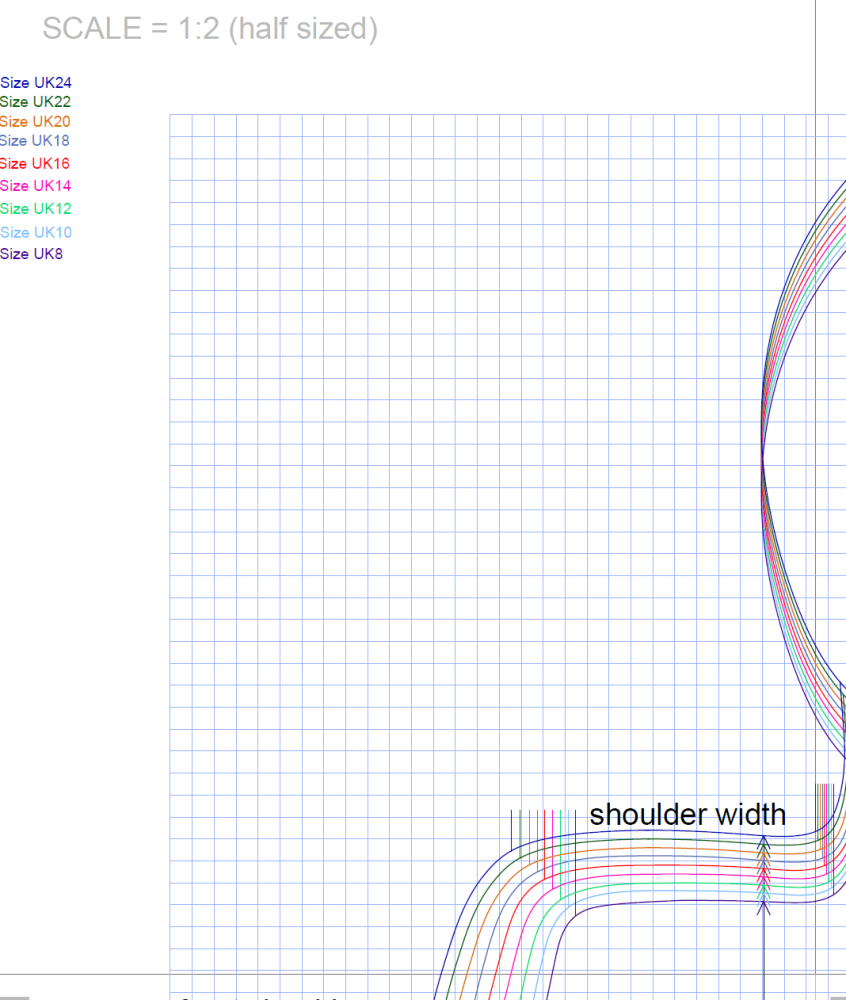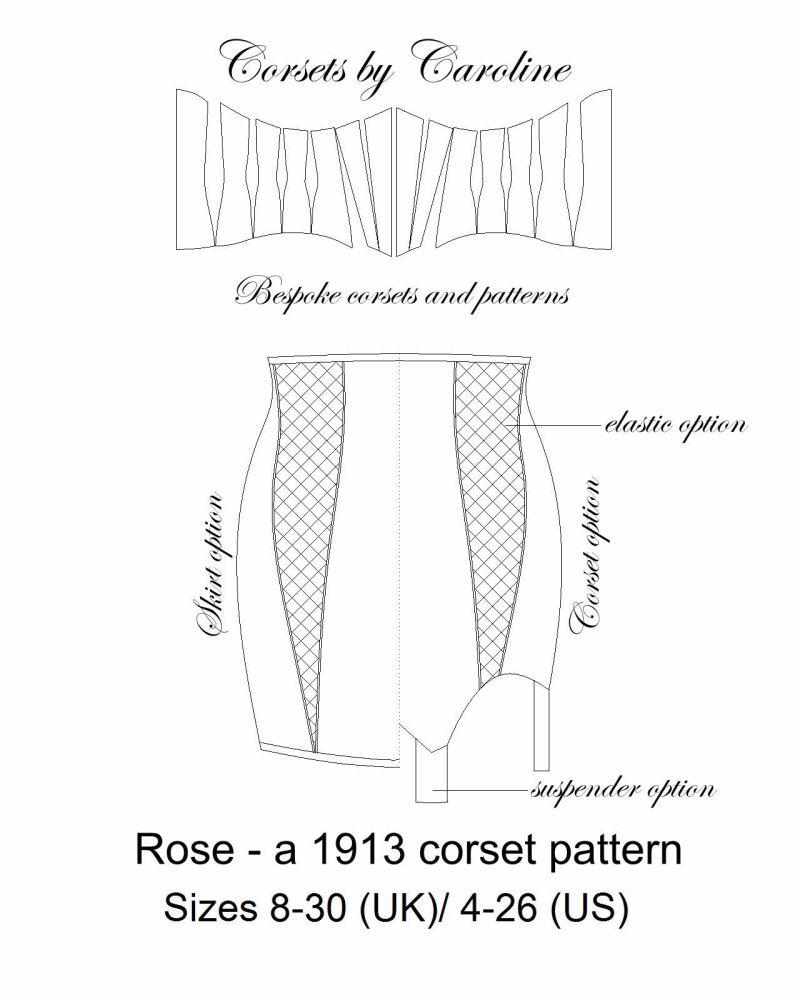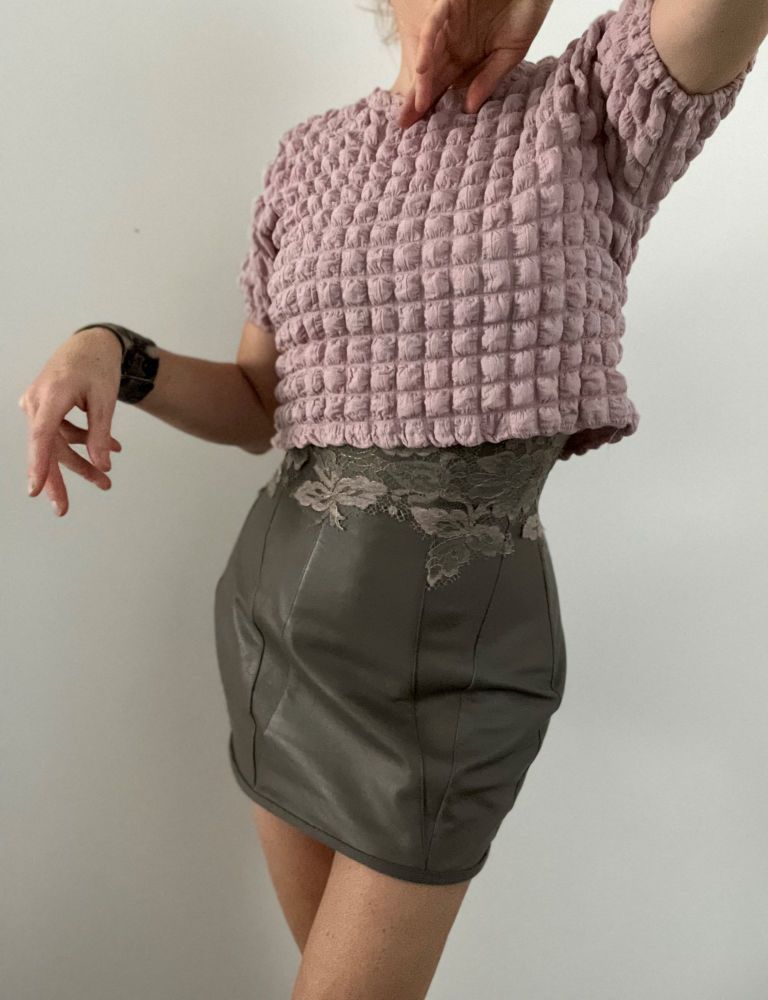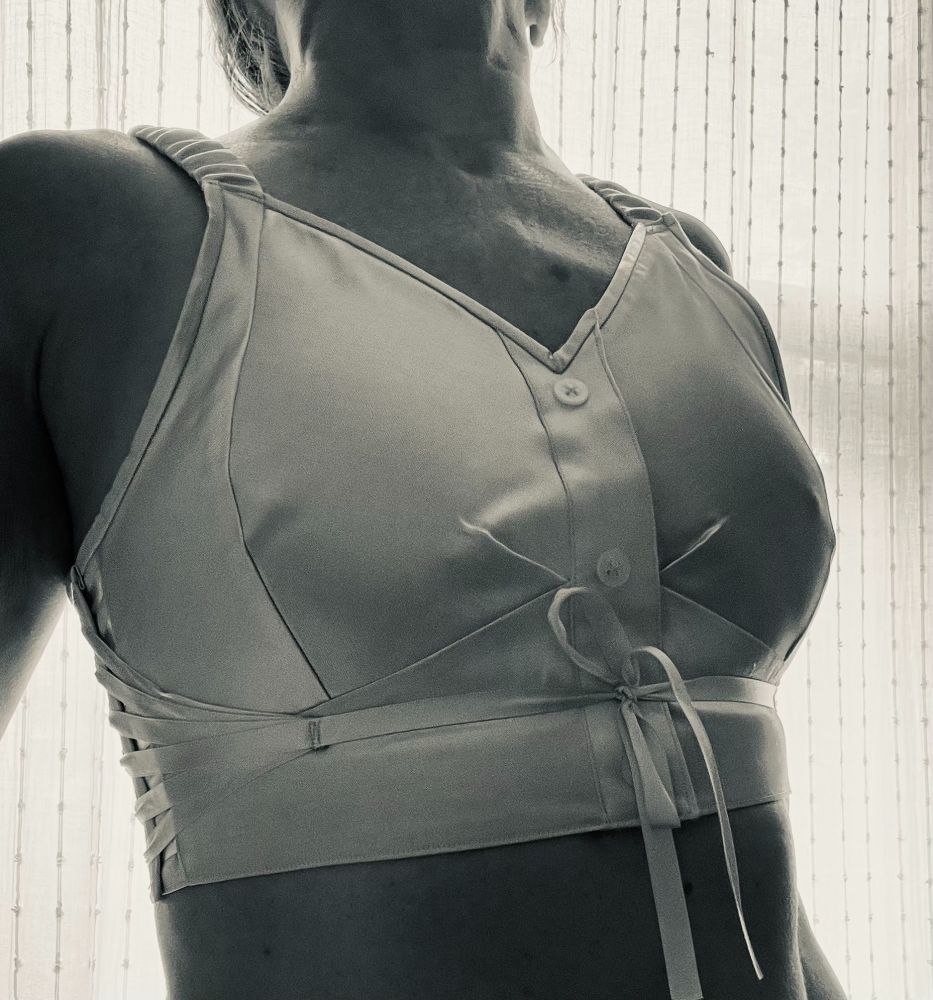2D mannequin
Posted on
Could you see a use for a half-sized 2D mannequin showing a few useful standard measurements?

I use standard measurements diagrams in my CAD work to sense-check my drafting and recently expanded this into more of a representative body shape (croquis). Each size reflects standards for vertical measurements; waist to shoulder, waist to nape, waist to hip and knee, and horizontals; shoulder, chest, and back width. Waist, low waist, hip and bust can't be represented to scale in 2D but their vertical position on the body is shown.
Obviously when working in 2D there are limitations, but I have found it useful when allocating grades to panels, and positioning the shoulder strap for example. In the design I am currently working on, the seam at the back falls roughly at the middle of one side of the back width, and by overlaying the panels for each size over the croquis I was able to make adjustments quickly and easily. This short video shows how I assessed the shoulder strap position but I also went on to move the seams on the larger size; https://youtu.be/ROf08mXX-pc
It's obviously easy in CAD to overlay pattern panels on a full-sized croquis, but even printed out on paper at half-scale it could be useful for pattern development and grading. The resultant PDF of the e-mannequin I have created comes in standard sizes UK8-24 (each size layer can be hidden) and cm or inch grids that can also be turned on or off. What do you think? Send me your e mail address if you like the idea and would like to test it out.


